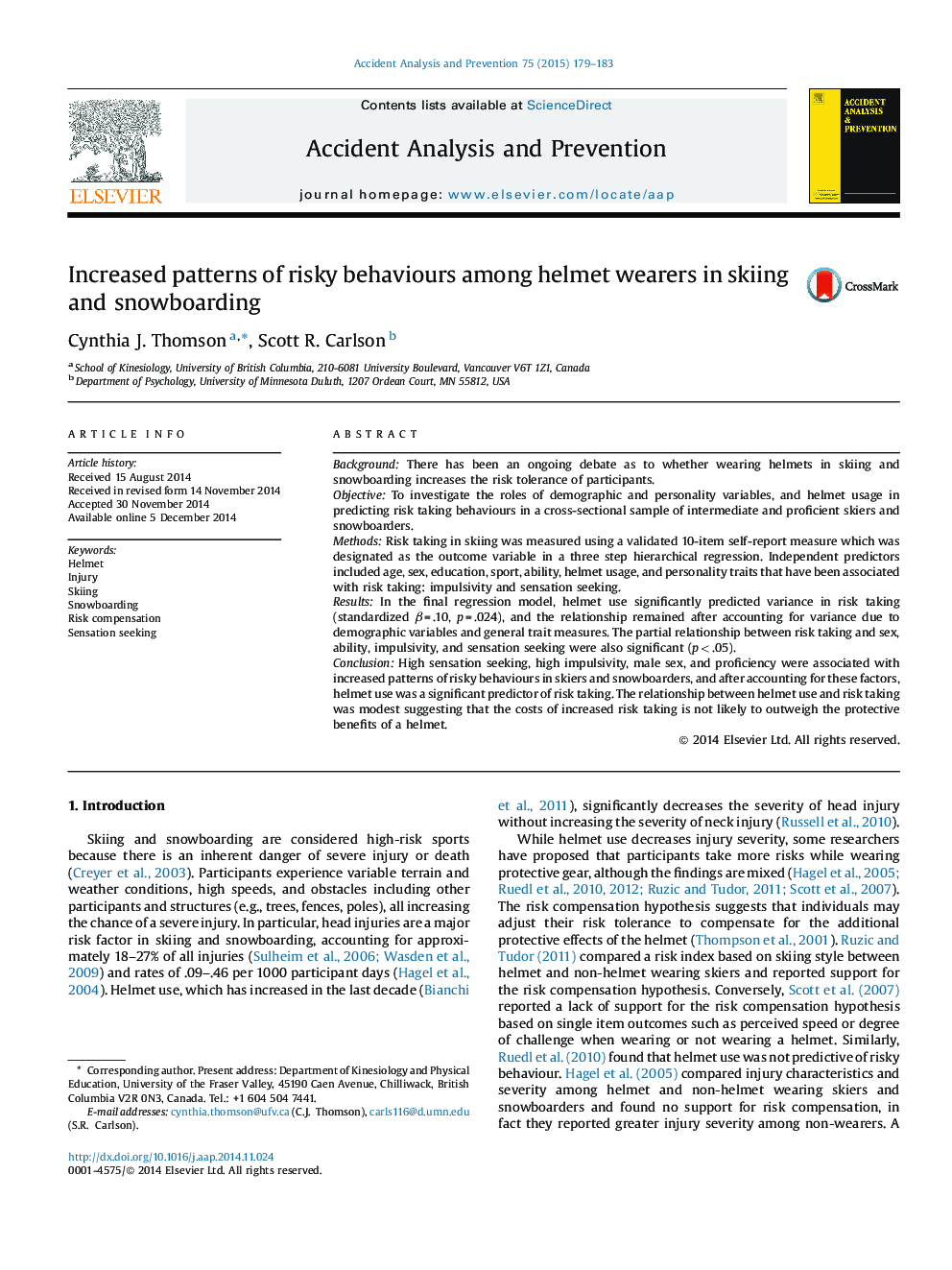| کد مقاله | کد نشریه | سال انتشار | مقاله انگلیسی | نسخه تمام متن |
|---|---|---|---|---|
| 572202 | 1452922 | 2015 | 5 صفحه PDF | دانلود رایگان |
• Helmet use is associated with patterns of risk taking behaviours in snow sports.
• Factors including male sex, proficiency, and sensation seeking predict risk taking.
• Helmet users reported a higher frequency of injuries than non-users.
BackgroundThere has been an ongoing debate as to whether wearing helmets in skiing and snowboarding increases the risk tolerance of participants.ObjectiveTo investigate the roles of demographic and personality variables, and helmet usage in predicting risk taking behaviours in a cross-sectional sample of intermediate and proficient skiers and snowboarders.MethodsRisk taking in skiing was measured using a validated 10-item self-report measure which was designated as the outcome variable in a three step hierarchical regression. Independent predictors included age, sex, education, sport, ability, helmet usage, and personality traits that have been associated with risk taking: impulsivity and sensation seeking.ResultsIn the final regression model, helmet use significantly predicted variance in risk taking (standardized β = .10, p = .024), and the relationship remained after accounting for variance due to demographic variables and general trait measures. The partial relationship between risk taking and sex, ability, impulsivity, and sensation seeking were also significant (p < .05).ConclusionHigh sensation seeking, high impulsivity, male sex, and proficiency were associated with increased patterns of risky behaviours in skiers and snowboarders, and after accounting for these factors, helmet use was a significant predictor of risk taking. The relationship between helmet use and risk taking was modest suggesting that the costs of increased risk taking is not likely to outweigh the protective benefits of a helmet.
Journal: Accident Analysis & Prevention - Volume 75, February 2015, Pages 179–183
